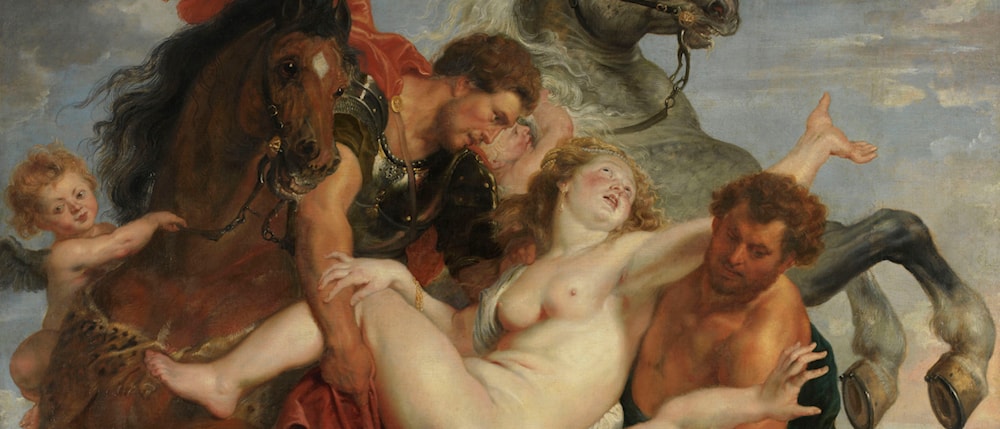Book Review of Roger Kimball's "The Rape of the Masters"

Published on 1 January, 2005
Any enthusiast of the Art Renewal Center (ARC) will find Roger Kimball's stirring book The Rape of the Masters: How Political Correctness Sabotages Art of great interest. In fact, the aims of the Center and Kimball are quite similar. While ARC strives to restore integrity to the technical training and production of art from its present denigrated state, Kimball attempts to redeem art history from a study of liberal political theory to a focus on the actual work of art and its aesthetic presentation.
In his book, Kimball mockingly cites and annotates ludicrous examples of academic art history texts that "subordinate art to a pet political, social, or philosophical agenda."
Then he counters with his own soundly reasoned interpretations, considering each work on its own aesthetic and historical terms. Kimball chooses his illustrations of art historical mischief widely. He indicts some of the art establishment's biggest names and exposes some of its most typical blunders, in which Marxist and feminist interpretations are forced upon paintings by Rubens , Gauguin, Homer and others. At times these texts are hysterical in their fantastic claims and baffling rhetoric and at other times they are enraging in their distorted and sexualized misinterpretations of some of the world's great paintings. One of Kimball's most shocking examples is Professor David Lubin's psychoanalysis of John Singer Sargent's masterpiece The Daughters of Edward Darley Boit, published by the Yale University Press. To Lubin the painting of four young girls in their comfortable Paris apartment is a "submerged sexual fantasy" in which "he" provides the keys to unlock.
His discussion of the work is preoccupied with genital zones, penises, and erotic word play. In the end, Lubin's fanciful enemy is, of course, the "white patriarchal capitalist," Mr. E. D. Boit himself, and the entire piece can be viewed as "his harem, his congregation of wives." In Lubin's hands Sargent's painting becomes a space of transgressive sexual turmoil of the most disgusting kind.
But why should this academic gibberish compel the New Criterion writer, Roger Kimball, to write an entire book on the subject? Kimball explains that such readings "retain the power to taint, to adulterate, to besmirch our experience of art." Instead of enriching the aesthetic and historical pleasure we receive from the work of art, these interpretations act as a barrier between us and the work's message. This consequence should not be lightly discounted considering the thousands of students who enter colleges and universities each year to be indoctrinated with this politically (in)correct theory.
Many students, I believe, enter naively expecting to be actually educated in the connoisseurship of art and the historical context into which it fits. However, they often find that the effort to thoroughly and freshly examine a work of art is soon substituted by the ease of interpreting the piece according to one of art history's standardized methodologies. Never mind the artist's original intention because, as Kimball points out through several quotes made by professional art historians, that is not the "crucial issue." A twentieth-century art historian's more sophisticated insight takes center stage instead, projecting the historian's autobiography on the work of art.
As a recent M.A. graduate in art history I have witnessed first-hand the widespread nature of these non-aesthetic readings of art. Interpretations like that listed above are not the exception, but de rigueur of an art history university education. In classes, I have sat before slides of traditional nineteenth-century paintings where grating feminist theory has been offered to answer the question "What do you see in this painting?" Nearly any available object contained potential to be a phallic symbol, any shy female expression was a result of sexual repression, and any feminine charm was meant to imply a male chauvinist gaze.
Such deconstructionist interpretations are often backed with an impressive bibliography. Even the most fantastic claims take on an aura of truth when they contain a reference by Derrida, Freud, Irigaray, Lacan, or Adorno. Bewilderment and incomprehension of the impenetrable theoretical texts intimidate many students into a quiet acceptance of contemporary art historical pseudo-scholarship. That is why Kimball's book should be greatly appreciated. Throughout Rape of the Masters, Kimball displays keen insight into the tactics of contemporary art history and its noxious consequences. He gives disenchanted art students a voice and a rhetoric for expressing their views. The result is a witty book whose tone of ridicule makes it an engaging and worthwhile read.



